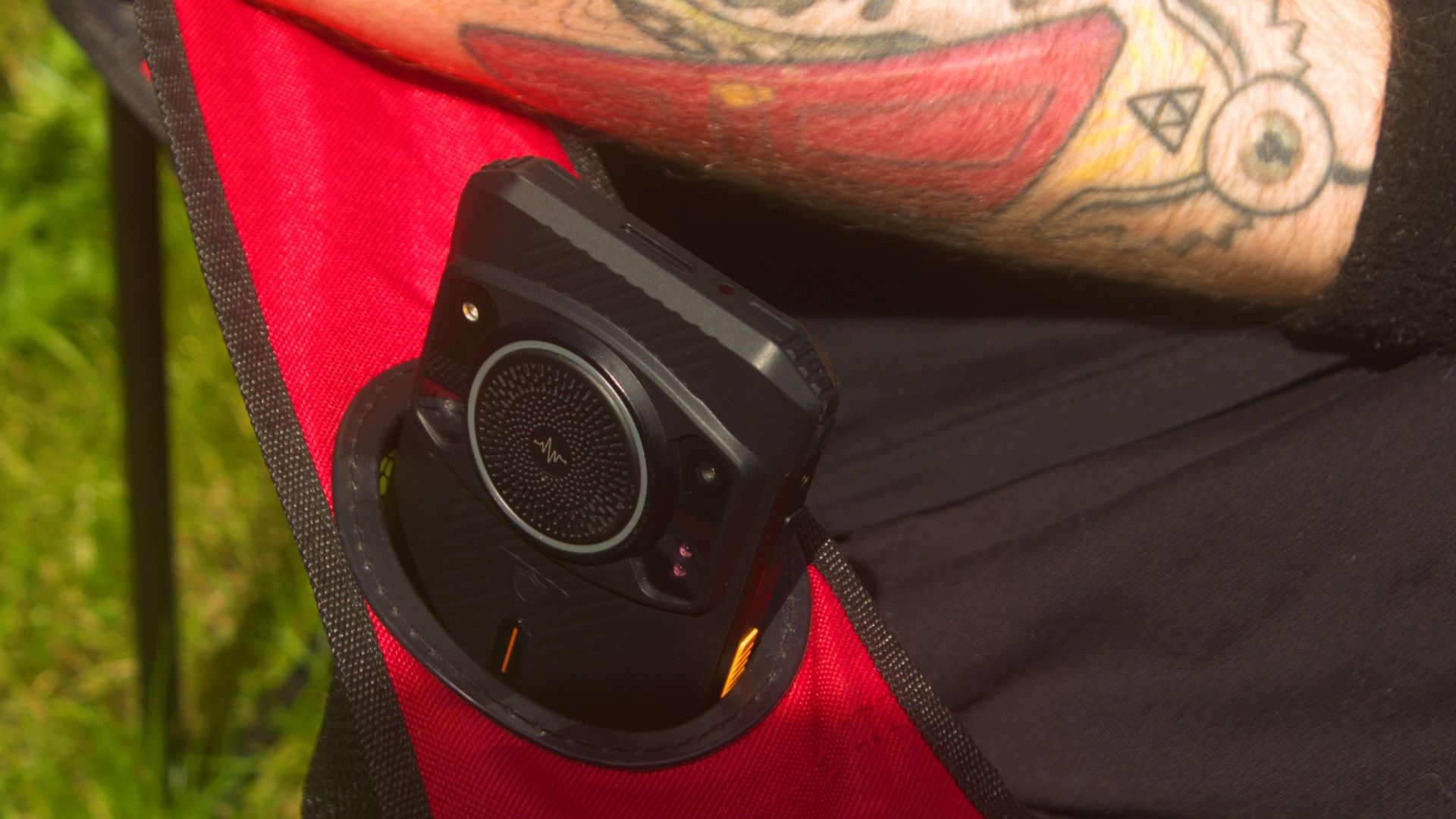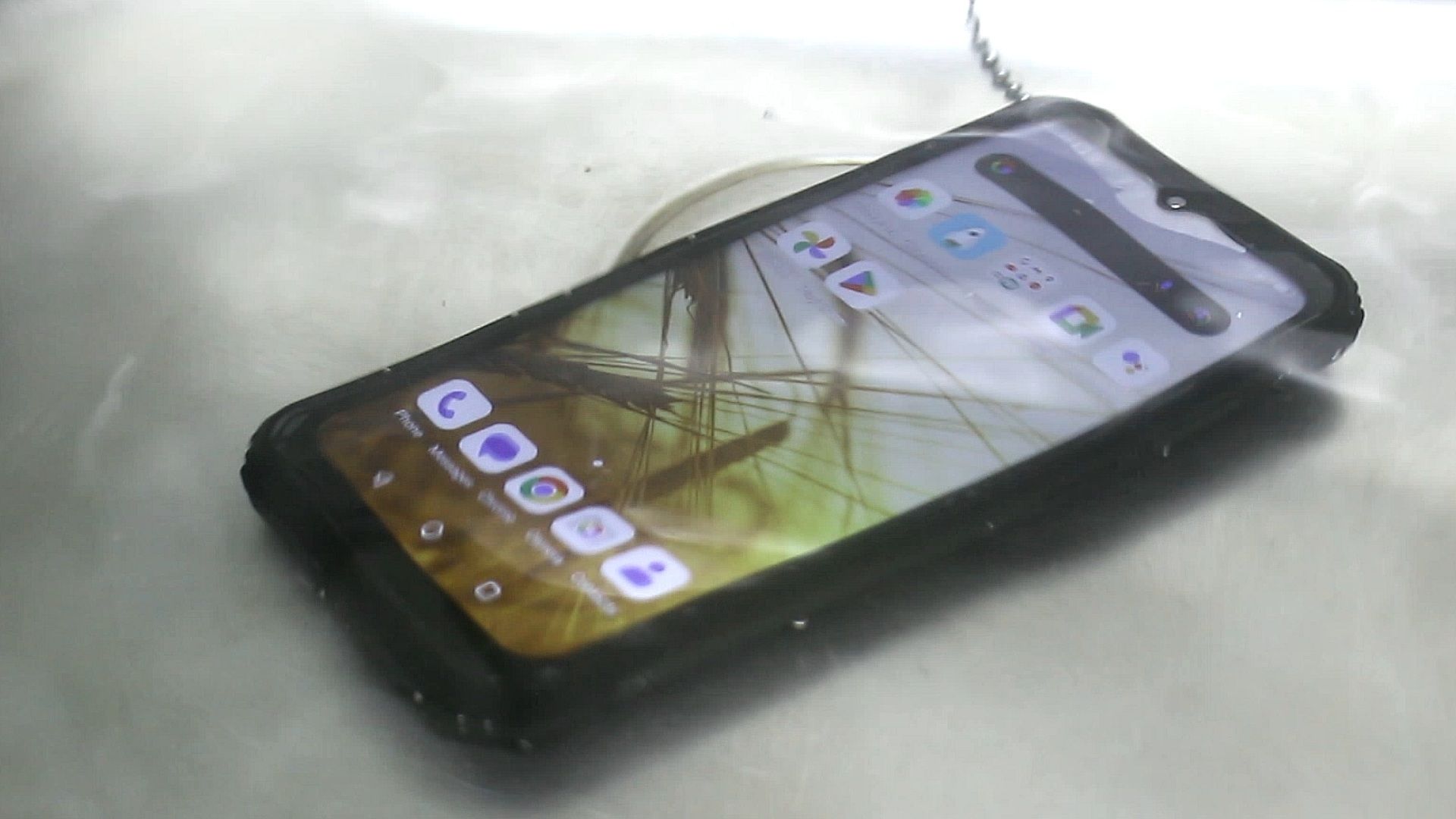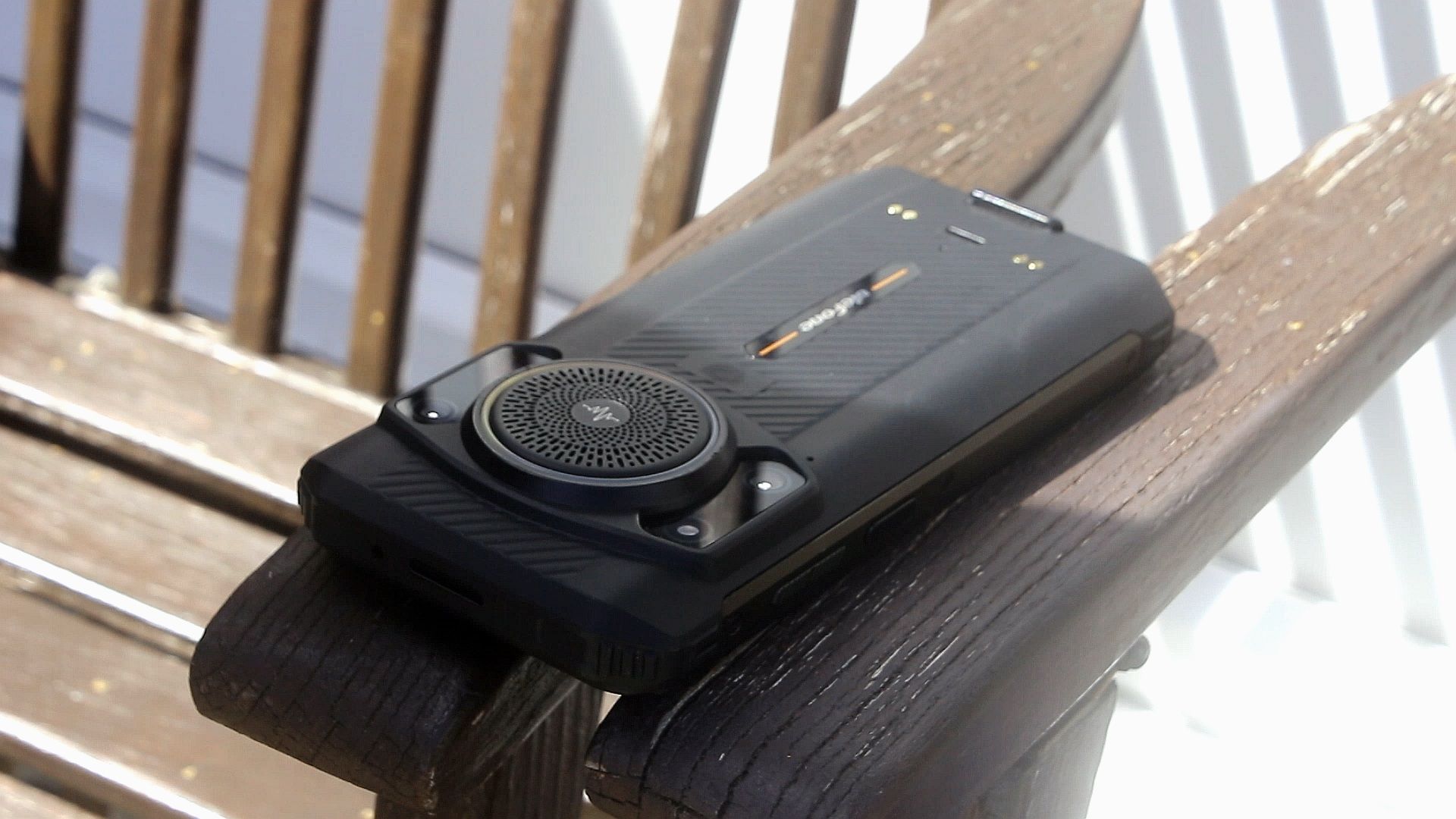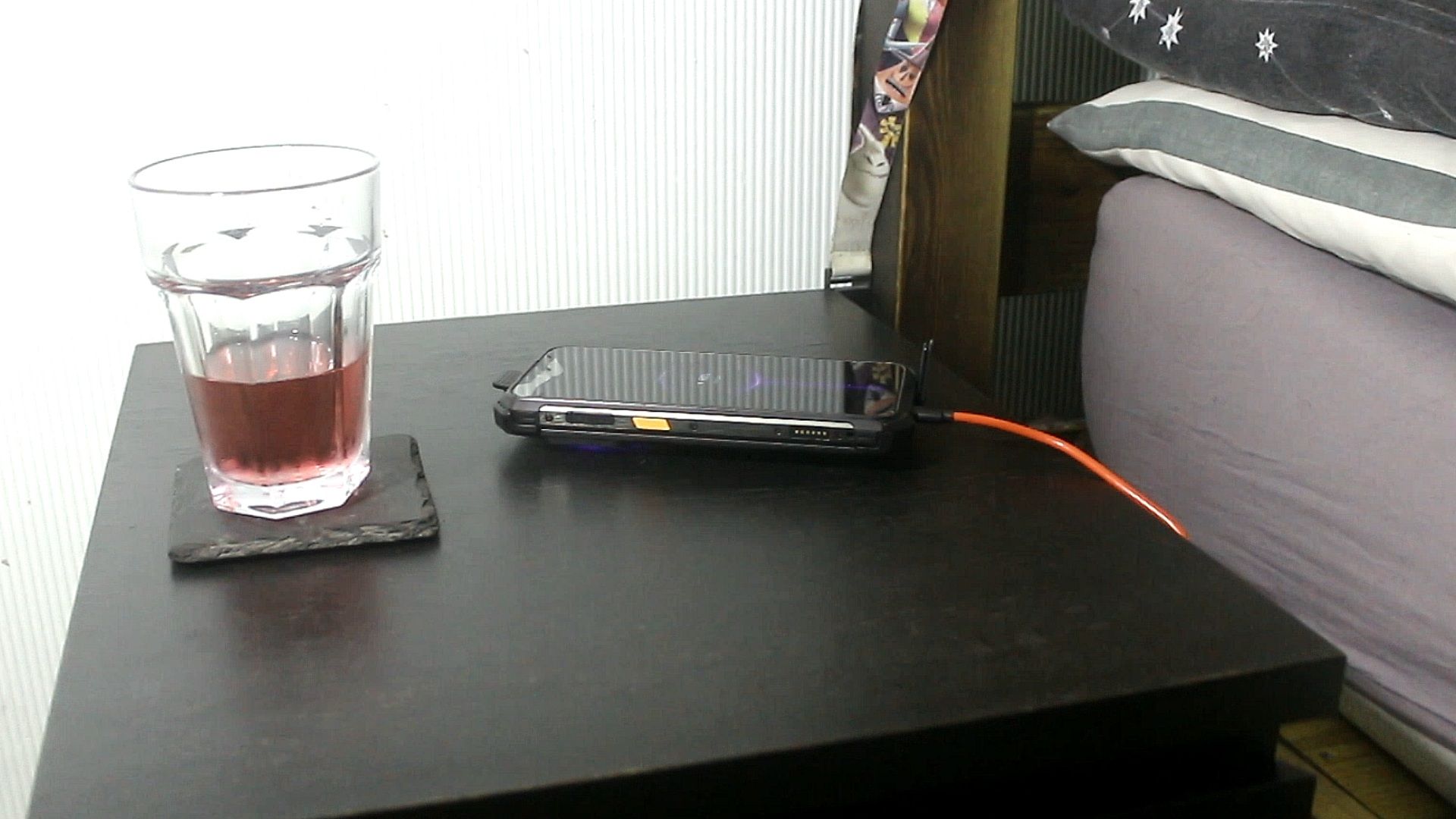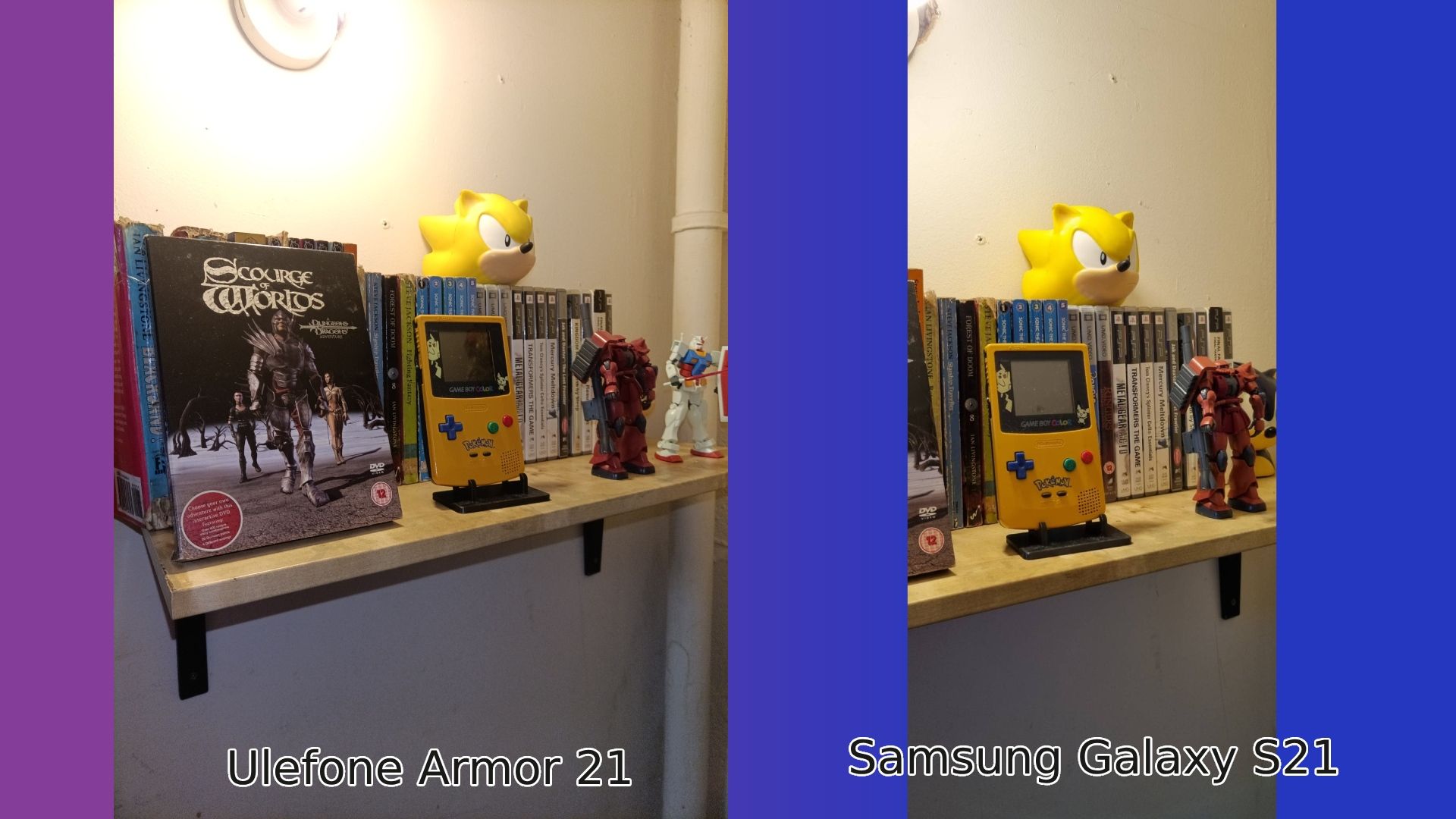Key Takeaways
- The Ulefone Armor 21 is a rugged phone with a powerful and large speaker, but the sound quality is low and it can be uncomfortable to hold and use.
- The phone’s toughness and long battery life are its standout features, making it a good choice for hikers.
- The phone is difficult to damage and has a reliable battery, but the speaker’s quality and the phone’s stability on surfaces are drawbacks.
Rugged phones are an important part of the smartphone ecosystem, and even among rugged phones the Ulefone Armor 21 is sturdy. The latest release from the company’s Armor line features a tough-as-nails construction and the curious addition of a huge and purportedly powerful speaker on the back.
It’s undoubtedly true that the speaker is powerful and large, but that doesn’t necessarily equate to good quality. Luckily, the toughness and battery life still give plenty of reasons for users to want this particular upgrade.
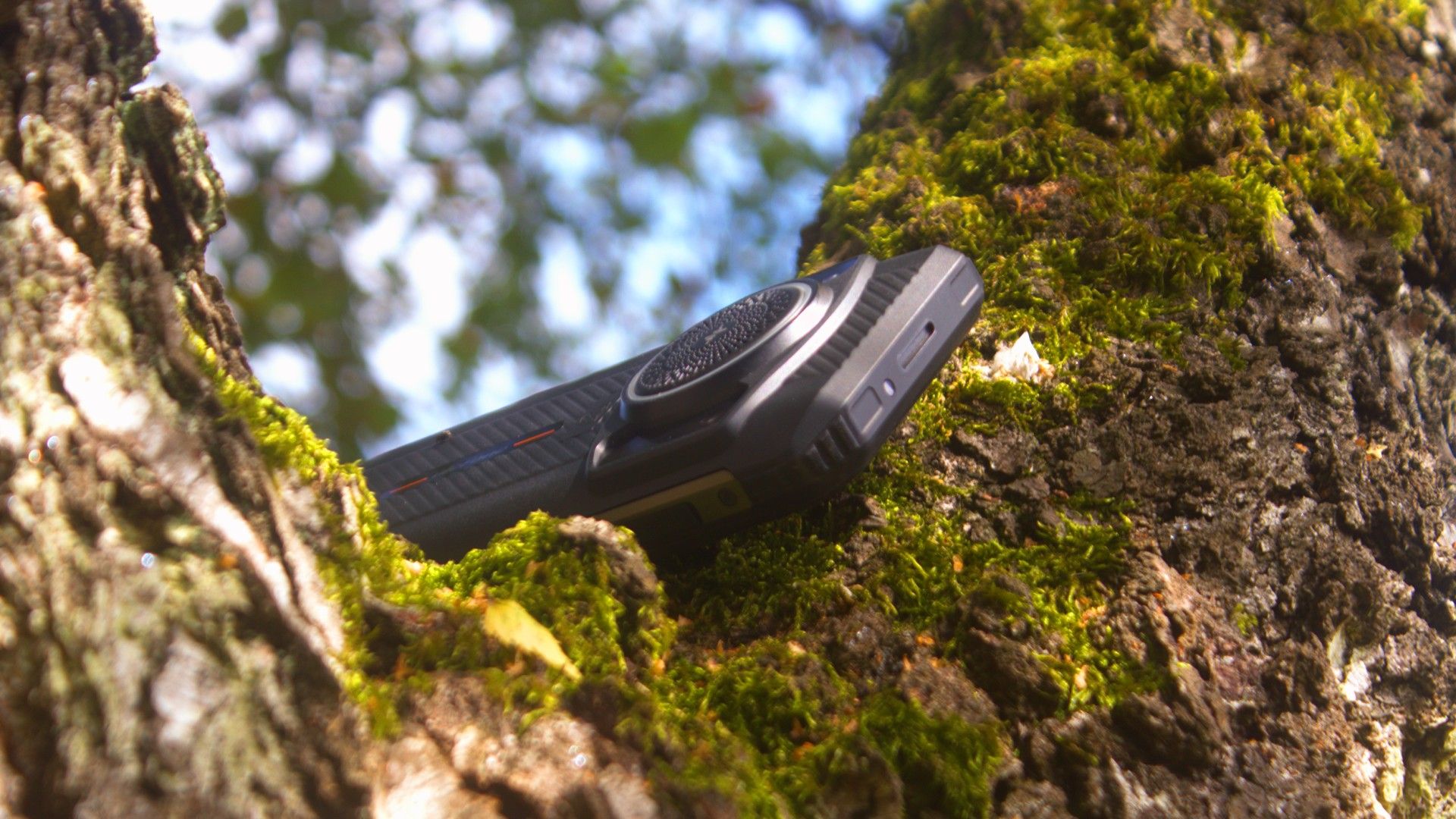
Ulefone Armor 21
The Ulefone Armor 21 is about as solid as it’s possible for a rugged phone to be, and packs a whopping speaker into the package. It also has Android 13 support with very minimal changes and a battery than can be left uncharged for days straight without charging, making it the choice for hikers, but unfortunately not for almost anyone else.
- Brand
- He called
- Display
- 6.5-Inch 1080p
- RAM
- 8 GB
- Storage
- 256 GB
- Battery
- 9600 mAh
- Ports
- USB-C, Pogo Pins,
- Operating System
- Android 13
- Front camera
- 64 MP
- Rear cameras
- 16 MP
- Dimensions
- 6.93 x 3.21 x 0.71 inches
- Weight
- 400 G
- Charging
- 33W Fast Charging
- IP Rating
- IP69K
- Loud Speaker
- Insanely Long Battery Life
- Genuinely hard to damage
- Sound quality is low
- Uncomfortable to hold and use
- Unstable on most surfaces.
Armor 21: What’s Inside?
The Armor 21 is an Android 13 phone packing a Helio G99 chipset with 8GB of RAM, and 128GB of storage by default, though you can expand with a MicroSD card. Like many rugged phones, the Armor 21 is also incredibly physically sturdy, with ridged rubber edges to improve grip, and comes with an impressive 9600 mAh battery that’ll let it run for over 48 hours straight in most cases.
Beyond that, it features a 64MP 2K back camera, a 16MP 1080p selfie camera, and the 122dB loudspeaker on the back of the device, surrounded by a ring of LEDs. This particular feature is overtly large and prominent, making it somewhat hard to set the phone down on a flat surface without it sliding off or being unstable.
The phone is also pretty weighty, clocking in at around 400g (14oz), which puts it at the upper end of rugged phone weights even before you’ve put a case on. Speaking of which, the case packed with our phone was a shocking disappointment, especially for a rugged phone.
Unfortunately, the case adds even more unnecessary bulk to the already uncomfortable-to-use phone, including a latch at the bottom that can dig into your leg while the phone is in your pocket. On top of that, the special belt and carabiner attachments on our review unit completely fell apart. The carabiner disintegrated as soon as we removed it from the box, but the belt clip smashed during our first drop test; a bad sign for a rugged phone case.
Comfort and Stability
The large dimension and weight of the phone are a big clue that it’s rugged, but that 6.5-inch screen makes it feel more like a phablet than a smartphone. While the extra size is great news when it comes to watching videos or reading documents on the phone, it does mean it can be a bit unwieldy for everyday app usage.
If you have larger hands, this might be a preferable phone for you as it’ll mean less hand-cramping. The other side of that coin is that the small-handed among us will probably find the phone completely useless, or at the very least, horribly uncomfortable.
The bulky and heft of the phone also makes it a bit of a hazard. Any drop onto a hollow floor will risk doing some serious damage or, at the very least, annoying your downstairs neighbors.
Falls and tumbles are also inevitable since the phone is basically impossible to securely place down on a surface unless you want to put it glass-side down. As we mentioned before, it’s mostly thanks to the speaker, but you can make it slightly more stable with the external case, though your hands won’t necessarily thank you for it in the end.
Mostly Destruction-Proof
On the plus side, that reassuring weight is here for a reason, resulting in a phone that is genuinely difficult to damage. I tried throwing it at stuff, dropping it from heights—I even blasted it with a high-pressure and high-temperature hose—and it wasn’t affected. Even better, due to the rubber cap on the audio and charging port, you won’t get one of those annoying “foreign object” warnings when you try to charge it afterward.
So, that IP69K rating is for real. Even burying the phone in the garden didn’t result in any ingress of particles or moisture, so you can be sure it will stand up to the most grueling of hikes or outdoor sporting events. Of course, if you do submerge your phone in water or dirt, it will ruin the volume on the speaker until you clear it out.
Speaker Quality
The 122dB speaker is decently powerful, which you would probably expect considering the size of it. The volume levels it can reach are astronomical—potentially even hearing-damaging. You should also look out for trying to use your phone in a quiet setting, as even on the lowest volume, it’s still annoying loud without a third-party volume app.
In terms of quality, the speaker is slightly less successful. Despite claims of “Hi-Fi quality sound”, the Armor 21 speaker sounds more like it’s on par with a decent, budget speaker you could pick up in most electronics stores. While it’s not liable to bother you unless you’re an audiophile, it’s not great for a key selling feature of the phone, especially with the aforementioned effect on the comfortable use of the device.
You’ll also find a built-in light show with a ring of LEDs around the speaker acting as a visualizer. You can customize the lights on this “halo” ring to dance to the music in different ways, though they’re all dependent on volume level, so having it set too high or too low renders the effect a little pointless.
If you spend a lot of time in the great outdoors, this phone will make another portable speaker redundant; just don’t expect to be hosting any top-tier quality events with it. You should also make sure you’re not listening to it at full blast for almost any time at all unless you plan to hit play, then throw the phone away from yourself (to scare off a bear, perhaps?).
A minor side note is the inclusion of a physical audio jack. It’s a nice addition for anyone who prefers cabled headphones and means you have a backup if your wireless set runs out on a hike or camping trip.
Charging and Battery
If you plan to take the phone out with you on long-term trips, you’ll be pleasantly surprised by how great the battery is, even when your usage is a little heavier. In real terms, I found that the Armor 21 has a battery that lasts an insane amount of time. You can last two days and nights before needing to be plugged in.
When it does come time to charge the device, you have a couple of options. While it doesn’t support wireless inductive charging, you can charge through an optional stand thanks to the inclusion of pogo pins on the back. However, if you use the case, you won’t be able to charge through the stand, so bear that in mind.
The traditional USB-C charging serves perfectly well, with 33W fast charging getting the battery up to full speed within a few hours. You’ve also got the rubber cap over the charging and audio port to prevent anything from getting caught in there during the day.
Performance
In terms of performance, the Armor 21 puts out acceptable results, scoring 1229 on 3D Mark’s Wildlife benchmark. That score puts it on a similar level to the Xiaomi Mi Mix 4, and well under the average performance for a new phone in Q2 2023 (but not much of a shock for a rugged phone).
Whether it’s below average or not, you’ll still be able to play the majority of modern apps and games on the phone without any issues. I tested everything from Genshin Impact to Call of Duty Mobile and got decent enough results, as long as graphics were kept on medium or low settings. That also means that social media apps like TikTok work fine, though with some of the features restricted for some reason.
Video and image editing are also relatively smooth, at least as long as you stick to Google’s built-in suite of apps. You can also do standard document and productivity stuff here, with the big screen helping greatly.
The general UI is also smooth and usable, though you should remember we’re almost working with basic stock Android 13 here. There have been a few tweaks made for Ulefone with logos and certain unique UI elements, but beyond that, this is about as close to a stock build as you can get without actually being stock.
Camera
The camera, much like the speaker, is serviceable but nothing special. You can get decent shots out of the 64MP camera, but you won’t be winning any prizes for the high resolution of your images. 2K is fine, but 4K is standard nowadays, even on cheaper phones.
We tested the lens against an old Samsung S21 and came away with some mixed results. The Samsung and Ulefone devices seem to be relatively comparable, despite the S21’s age starting to show.
When we tried out the ultra-high res modes, things got a little more varied, with the Ulefone taking the better outdoor shot, while Samsung won on detail when indoors.
In short, while the Armor 21 isn’t the phone to get for an avid phone photographer, it’ll certainly do the job for taking holiday snaps or casual photography.
Should You Get the Ulefone Armor 21?
The Ulefone Armor 21 does have some great features going for it. Like many of the previous phones in the same family, it is incredibly rugged, standing up to a lot of punishment without breaking down at all, although the same can’t be said for the Armor case. It also has the huge benefit of a massive battery, perfect if you’re often away from a charger for long stretches.
Those positives aside, the supposed killer feature of a huge speaker has ended up causing more problems than it solved. Not only is it far too loud and of average quality, but it also makes the phone unstable and uncomfortable to use. The retail price of $340 isn’t super high in today’s smartphone market, but for that sort of money, the phone’s main features need to actually add to the experience.

